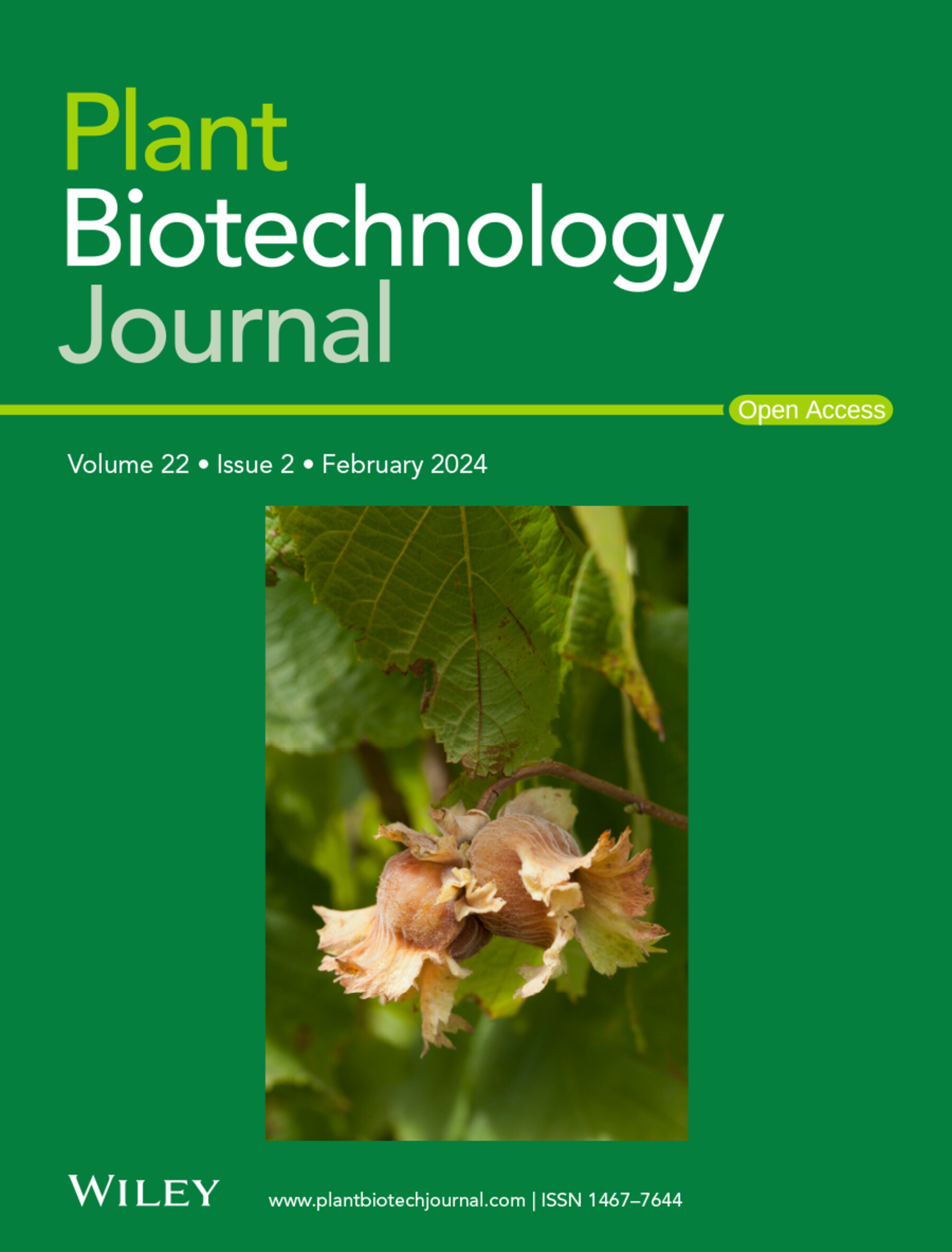稻瘟病菌核效应子SCRE7通过抑制oslbd11 /12促进的OsCPS2转录抑制水稻免疫
IF 10.5
1区 生物学
Q1 BIOTECHNOLOGY & APPLIED MICROBIOLOGY
引用次数: 0
摘要
植物病原真菌向寄主植物的各种细胞器分泌大量的效应蛋白,通过不同的机制抑制植物的免疫。在这项研究中,我们确定了SCRE7是一种独特的核效应物,对U. virens感染至关重要。在水稻细胞核中,SCRE7与转录因子OsLBD11/12相互作用。有趣的是,水稻对细菌和真菌疾病的防御反应和抗性受到SCRE7的负调控,但受到OsLBD11/12的正调控。转录组分析一致显示,SCRE7和OsLBD11/12在水稻中反向调控多种免疫相关通路。此外,我们证明了OsLBD11/12通过特异性结合OsCPS2启动子中的顺式元件激活编码阳性免疫调节因子的OsCPS2的转录。SCRE7减弱了OsLBD11/12与顺式元件的结合,从而抑制了转录因子的转录活性和水稻免疫。这一发现不仅代表了一种未知的感染策略,而且还为水稻抗病种质的创造提供了候选基因靶点。本文章由计算机程序翻译,如有差异,请以英文原文为准。
An Ustilaginoidea virens Nuclear Effector SCRE7 Inhibits Rice Immunity via Suppressing OsLBD11/12-Promoted Transcription of OsCPS2.
Phytopathogenic fungi secrete a great number of effector proteins into various organelles of host plants and suppress plant immunity through different mechanisms. In this study, we identify SCRE7 as a unique nuclear effector that is essential for U. virens infection. SCRE7 interacts with a transcription factor OsLBD11/12 in rice nuclei. Interestingly, defence responses and rice resistance against bacterial and fungal diseases are negatively modulated by SCRE7, but positively regulated by OsLBD11/12. Consistently, transcriptome analyses revealed that SCRE7 and OsLBD11/12 oppositely regulate multiple immune-related pathways in rice. Furthermore, we demonstrated that OsLBD11/12 activates the transcription of OsCPS2 encoding a positive immune regulator through specifically binding to the cis-element in the OsCPS2 promoter. SCRE7 attenuates the binding of OsLBD11/12 to the cis-element and thereby inhibits the transcriptional activity of the transcription factor and rice immunity. The findings not only represent an unidentified infection strategy in U. virens, but also provide candidate gene targets for the creation of disease-resistant germplasms in rice.
求助全文
通过发布文献求助,成功后即可免费获取论文全文。
去求助
来源期刊

Plant Biotechnology Journal
生物-生物工程与应用微生物
CiteScore
20.50
自引率
2.90%
发文量
201
审稿时长
1 months
期刊介绍:
Plant Biotechnology Journal aspires to publish original research and insightful reviews of high impact, authored by prominent researchers in applied plant science. The journal places a special emphasis on molecular plant sciences and their practical applications through plant biotechnology. Our goal is to establish a platform for showcasing significant advances in the field, encompassing curiosity-driven studies with potential applications, strategic research in plant biotechnology, scientific analysis of crucial issues for the beneficial utilization of plant sciences, and assessments of the performance of plant biotechnology products in practical applications.
 求助内容:
求助内容: 应助结果提醒方式:
应助结果提醒方式:


